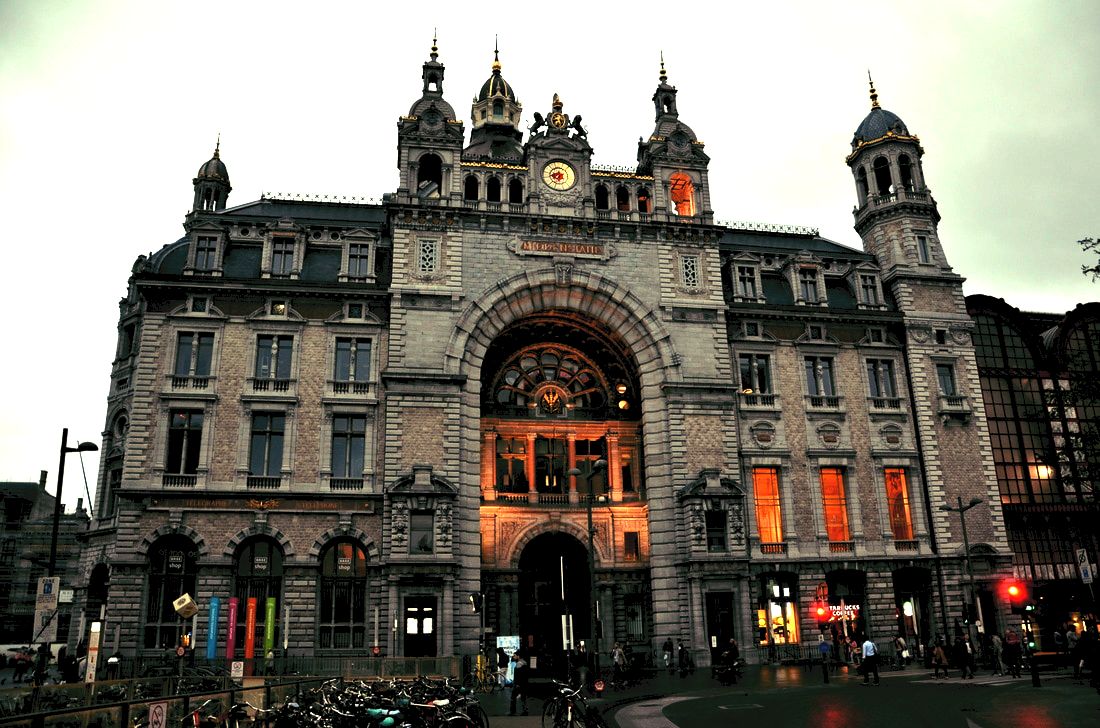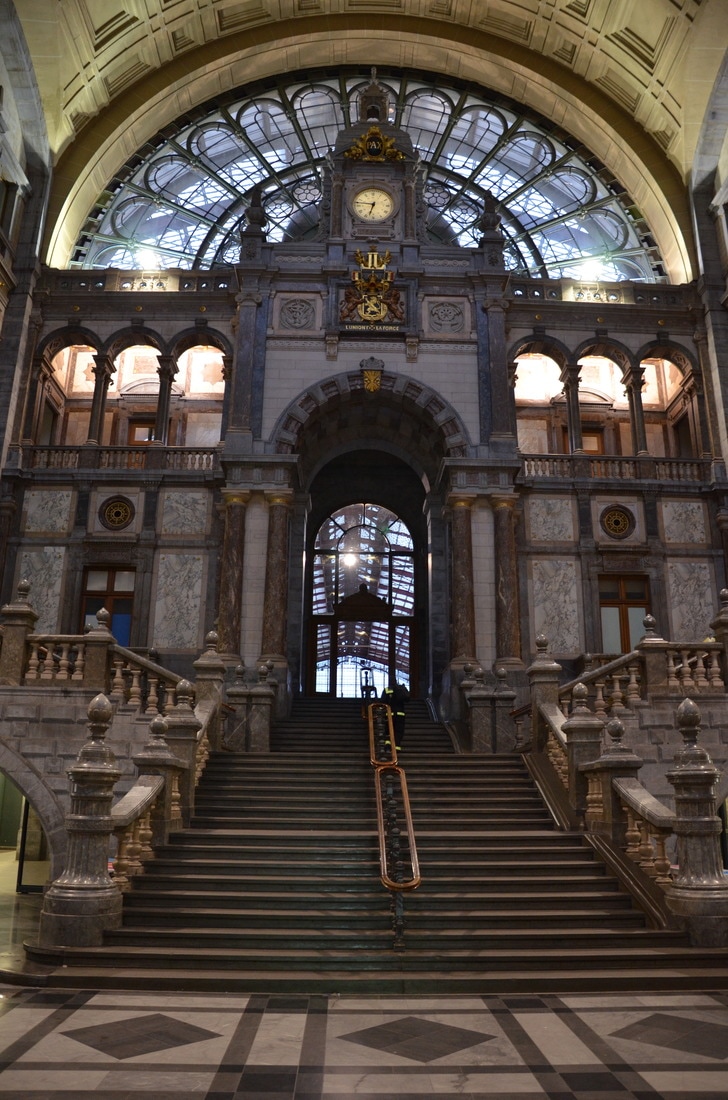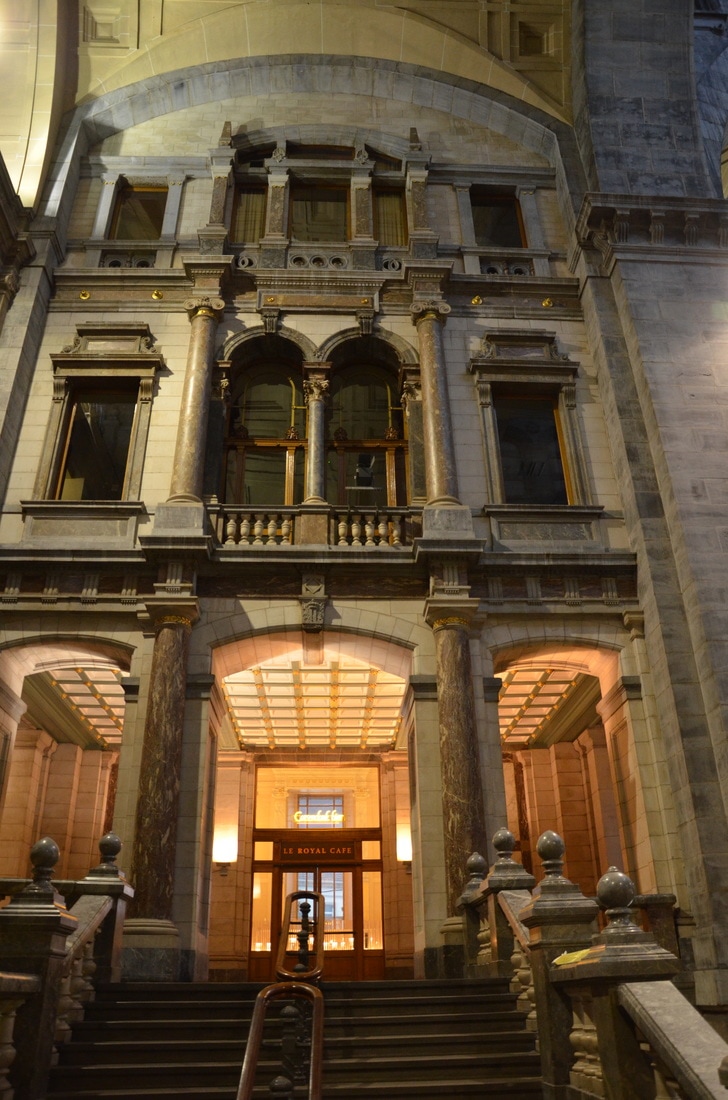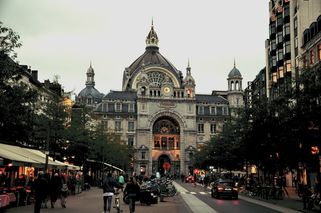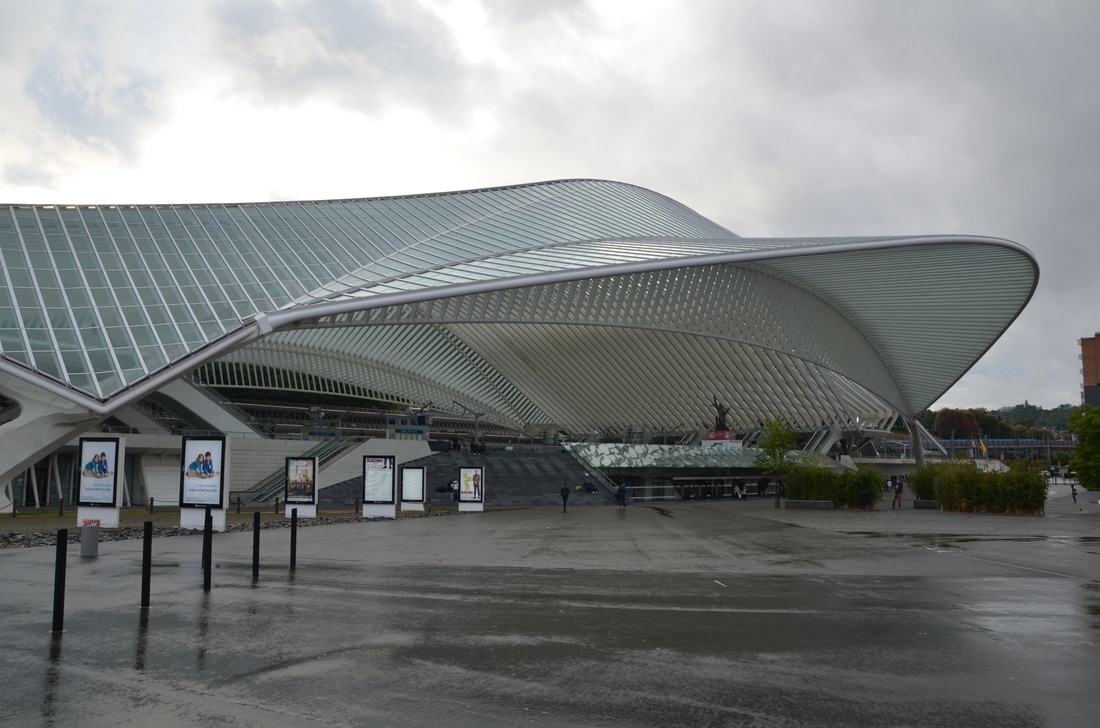The two most beautiful railway stations in Belgium are in Antwerp and Liege. They share many, the era, the style, the material from which they were built. What connects them is the undoubted artistry of architects who have been able to create unique shapes that are reminiscent of the memory, giving their works world renown.
The building at the Queen's Square Astrid, called by the inhabitants railway of the cathedral, is a pearl of antwerp architecture. This original building, built by the great Bruges architect Louis Delacenserie, was built in the 1895-1905 years. At the request of King Leopold II, the architect inspired the train station in Lucerne and the Pantheon in Rome, so we can not speak of one architectural style, but rather an eclectic mix of styles that allowed to create this magnificent building. Its interior is adorned with over twenty different types of marble and stone. The main hall is more like a palace, not the interior of the railway station.
Szczyt ogromnej kopuły wznosi się na wysokość 75 metrów. Spośród ośmiu mniejszych wież sześć zostało zburzonych w latach pięćdziesiątych. Na szczęście zrekonstruowano je w roku 2009, wraz z zegarem, herbem Antwerpii oraz dużymi posągami lwa. Dla turystów zwiedzających Antwerpię jest to miejsce obowiązkowe.
The splendid train station in Liege impresses with its futuristic shape. Construction of the train station, which was opened 18 September 2009 year-round station, began in 1996. The project was entrusted to one of the greatest architects in the world, Santiago Calatrava. Its aim was to create a train station for the 21st century.
|
Designing the station, Calatrava abandoned the traditional form of the building, on either side of the facade, and created a wallless structure. Its roof has become a key element, providing protection against the weather. The gentle curvature of the roof refers to the lines of the surrounding Cointe hills. The dimensions of the roof are as impressive as 200 meters in length, rising up to 35 meters.
|
Podstawą dla tego kolosa jest 39 stalowych łuków. Dworzec obsługuje dziennie 36 tysięcy pasażerów. Koszt tej gigantycznej inwestycji wyniósł około 300 milionów euro.

